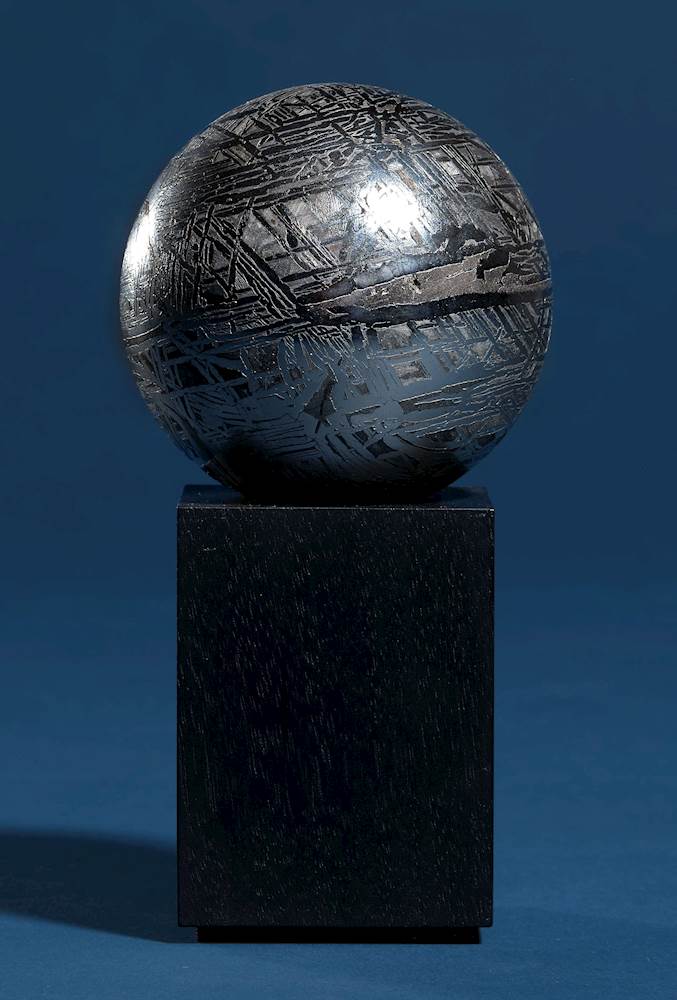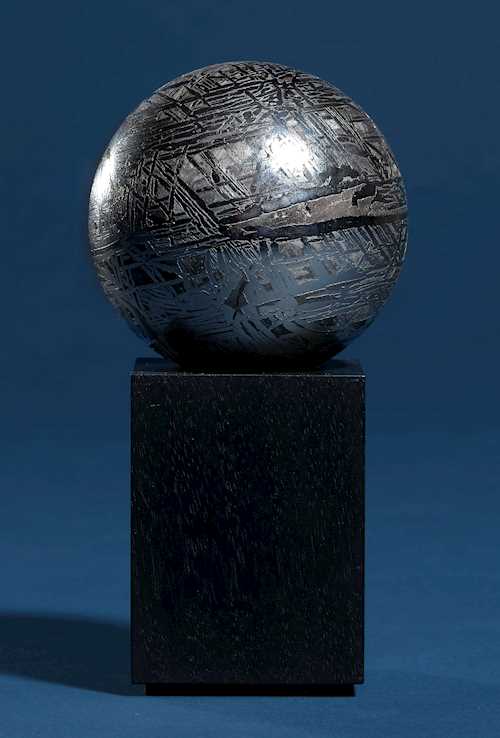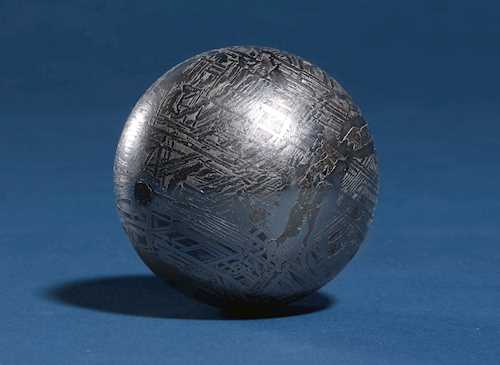
Lot 4006* - A209 Out of This World - Monday, 17. June 2024, 04.00 PM
ALETAI METEORITE SPHERE
Xinjiang Uyghur Autonomous Region, China
1898
Iron, IIIE
1056 g
D 6.3 cm
1898
Iron, IIIE
1056 g
D 6.3 cm
After its presumably rapid and violent descent from space, unrecorded by humans, the first part of the Aletai Meteorite was discovered in the northern part of Xinjiang Uyghur Autonomous Region, China, in 1898. Weighing close to 100 tons, it is the 5th-largest meteorite ever documented. Classified as an IIIE meteorite, Aletai is a member of one of the smallest subgroups of iron meteorites in scientific literature, of which only sixteen examples are on record.
Another characteristic of the stone is its unusual surface structure. Iron meteorites are from the metallic core of asteroids. When it hits earth, the iron cools so slowly that it forms interweaving bands of two iron-nickel alloys, taenite and kamacite – the latter of which is unique to meteorite specimens and found nowhere else on earth. When prepared in a certain manner, the individual metal grains are revealed in a geometric structure called Widmanstätten lines.
The specimen presented here is a perfect metallic sphere, extracted from the core of the meteorite. It allows a perfect three-dimensional view of the meteorite’s interior crystalline matrix. If one slowly moves a light on it, the meteorite shimmers with a captivating, iridescent glow. This is due to the main component of the meteorite, the rare metal schreibersite.
Many scientists believe schreibersite was the primary source of phosphorus, delivered to Earth via meteorites billions of years ago, creating the necessary conditions for the very beginnings of life on Earth.
Another characteristic of the stone is its unusual surface structure. Iron meteorites are from the metallic core of asteroids. When it hits earth, the iron cools so slowly that it forms interweaving bands of two iron-nickel alloys, taenite and kamacite – the latter of which is unique to meteorite specimens and found nowhere else on earth. When prepared in a certain manner, the individual metal grains are revealed in a geometric structure called Widmanstätten lines.
The specimen presented here is a perfect metallic sphere, extracted from the core of the meteorite. It allows a perfect three-dimensional view of the meteorite’s interior crystalline matrix. If one slowly moves a light on it, the meteorite shimmers with a captivating, iridescent glow. This is due to the main component of the meteorite, the rare metal schreibersite.
Many scientists believe schreibersite was the primary source of phosphorus, delivered to Earth via meteorites billions of years ago, creating the necessary conditions for the very beginnings of life on Earth.
CHF 2 500 / 3 500 | (€ 2 580 / 3 610)
Sold for CHF 6 250 (including buyer’s premium)
All information is subject to change.


